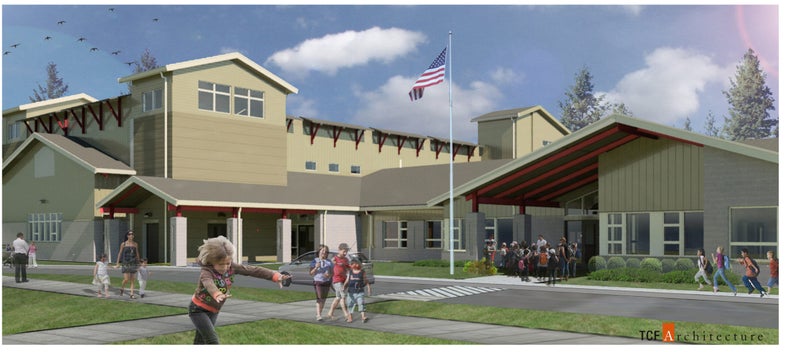Coming Soon To A Coast Near You: Vertical Tsunami Shelters
A school in Washington will be the first vertical tsunami shelter in the United States.

What do you do in a tsunami? For people living in areas prone to tsunamis, the advice is simple: get to higher ground as fast as possible. But for one town in Washington, safety will soon be as close as the local elementary school.
The artist rendering above might look like an average school building, but it has a second purpose. When it is finished next year, the building in Grays Harbor County, Washington, will be the first vertical tsunami evacuation structure in the country, capable of holding the approximately 1,000 people living within a 20-minute walking distance of the structure.

That 20-minute walking time is important. If the Cascadia fault in the western Pacific Ocean were to produce a large earthquake (such as a magnitude 9) then people on the northwest coast would only have about 20 to 30 minutes to get to safety.
The problem with traditional evacuation methods is that they simply take too long, especially in metropolitan areas, where evacuation routes can become clogged with cars of people trying to get out of town. A community might only have 30 minutes of warning before a tsunami hits, and getting stuck in traffic while a wall of water is bearing down on your location is … not ideal. Hence, the idea of moving on up. A building shelter in a central, densely populated area is more easily accessible than a distant high elevation only accessible by car.
Buildings that are meant to serve as vertical evacuation structures have to meet a lot of different criteria, including being able to withstand the forces of an earthquake and, obviously, a tsunami. That means that the foundation has to be strong, and the structural supports need to be able to handle the forces of water and debris crashing into them. Almost as important as the building itself is the location of the structure. In this case, the building is situated on a ridge, making the shelter area 55 feet above sea level. All those specifications require a significant amount of money to turn into reality, so Grays Harbor County passed a $13 million dollar bond to fund the construction of the new structure.
In the wake of the devastating Japanese tsunami in 2011 and the 2004 tsunami in the Indian Ocean, other communities on the West Coast have begun considering similar structures to shelter the thousands of people who live in low-lying areas. Other places around the world are also looking into vertical evacuation strategies. In Japan, a few different structures have already been built, and in Indonesia, researchers at Stanford are looking into reinforcing existing buildings to make them safe spaces in the event of a tsunami.